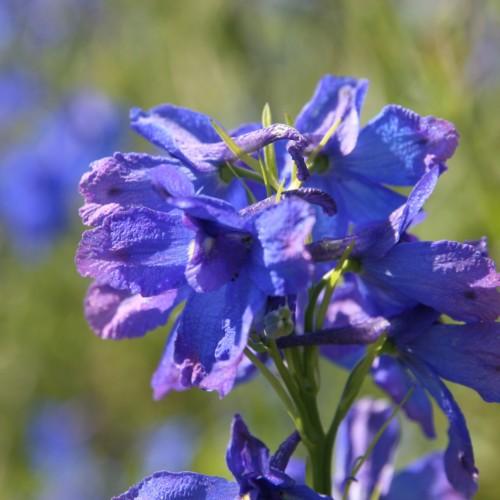
Siberian larkspur
Delphinium grandiflorum
Cycle:
Herbaceous Perennial
Watering:
Average
Hardiness Zone:
4 - 7
Flowers:
Flowers
Sun:
Full sun
Leaf:
Yes
Growth Rate:
High
Maintenance:
Moderate
Poisonous To Humans:
Yes
Poisonous To Pets:
Yes
Care Level:
Medium
watering
Siberian larkspur (Delphinium grandiflorum) should be watered consistently and deeply. It typically needs 1-2 inches of water per week, either from rainfall or manual irrigation. Water when the top 2-3 inches of soil are dry to the touch. Water in the morning and avoid wetting foliage late in the day to prevent disease.
sunlight
Siberian larkspur (Delphinium grandiflorum) can thrive in full sun or partial shade, but prefer full sun. For optimal growth and flowering, the plant requires at least 6 to 8 hours of direct sunlight each day. This is best provided in the morning when the sun is less intense, and can help the plant to prepare for the heat of the day. Siberian larkspur grows best in temperatures between 65 and 72 degrees Fahrenheit, with a minimum nighttime temperature of around 60 degrees. In climates with intense summer heat, some afternoon shade is recommended for optimal growth. If the larkspur is receiving too much sunlight, its leaves may become scorched or their colors may start to fade.
pruning
Siberian Larkspur should be pruned in early spring, prior to active growth. Remove any dead or damaged stems, and thin out any overcrowded stems. Remove any stems at the base that are not producing flowers. This will help encourage better growth and promote the production of more flowers. You can cut the main stems back by up to 1 third of their total length. Pruning Siberian Larkspur is important for its health and to keep the flowers and the plant shrub-like.
